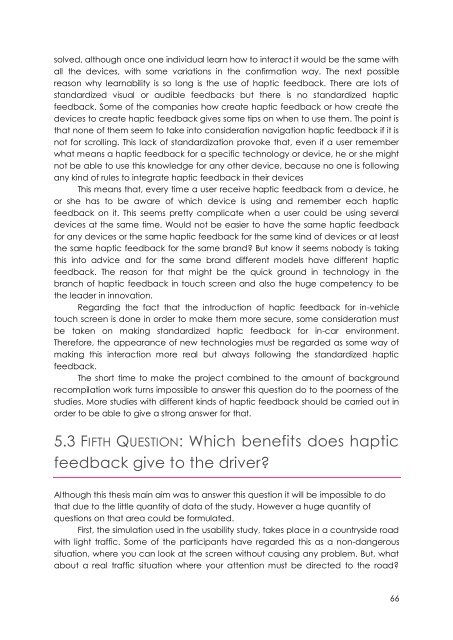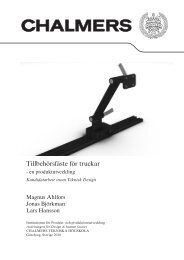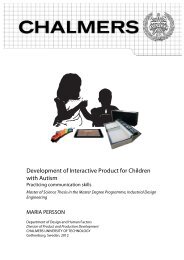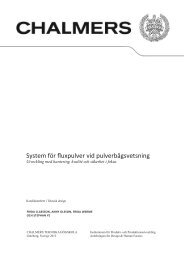Thesis - Teknisk Design
Thesis - Teknisk Design
Thesis - Teknisk Design
You also want an ePaper? Increase the reach of your titles
YUMPU automatically turns print PDFs into web optimized ePapers that Google loves.
solved, although once one individual learn how to interact it would be the same withall the devices, with some variations in the confirmation way. The next possiblereason why learnability is so long is the use of haptic feedback. There are lots ofstandardized visual or audible feedbacks but there is no standardized hapticfeedback. Some of the companies how create haptic feedback or how create thedevices to create haptic feedback gives some tips on when to use them. The point isthat none of them seem to take into consideration navigation haptic feedback if it isnot for scrolling. This lack of standardization provoke that, even if a user rememberwhat means a haptic feedback for a specific technology or device, he or she mightnot be able to use this knowledge for any other device, because no one is followingany kind of rules to integrate haptic feedback in their devicesThis means that, every time a user receive haptic feedback from a device, heor she has to be aware of which device is using and remember each hapticfeedback on it. This seems pretty complicate when a user could be using severaldevices at the same time. Would not be easier to have the same haptic feedbackfor any devices or the same haptic feedback for the same kind of devices or at leastthe same haptic feedback for the same brand? But know it seems nobody is takingthis into advice and for the same brand different models have different hapticfeedback. The reason for that might be the quick ground in technology in thebranch of haptic feedback in touch screen and also the huge competency to bethe leader in innovation.Regarding the fact that the introduction of haptic feedback for in-vehicletouch screen is done in order to make them more secure, some consideration mustbe taken on making standardized haptic feedback for in-car environment.Therefore, the appearance of new technologies must be regarded as some way ofmaking this interaction more real but always following the standardized hapticfeedback.The short time to make the project combined to the amount of backgroundrecompilation work turns impossible to answer this question do to the poorness of thestudies. More studies with different kinds of haptic feedback should be carried out inorder to be able to give a strong answer for that.5.3 FIFTH QUESTION: Which benefits does hapticfeedback give to the driver?Although this thesis main aim was to answer this question it will be impossible to dothat due to the little quantity of data of the study. However a huge quantity ofquestions on that area could be formulated.First, the simulation used in the usability study, takes place in a countryside roadwith light traffic. Some of the participants have regarded this as a non-dangeroussituation, where you can look at the screen without causing any problem. But, whatabout a real traffic situation where your attention must be directed to the road?66
















